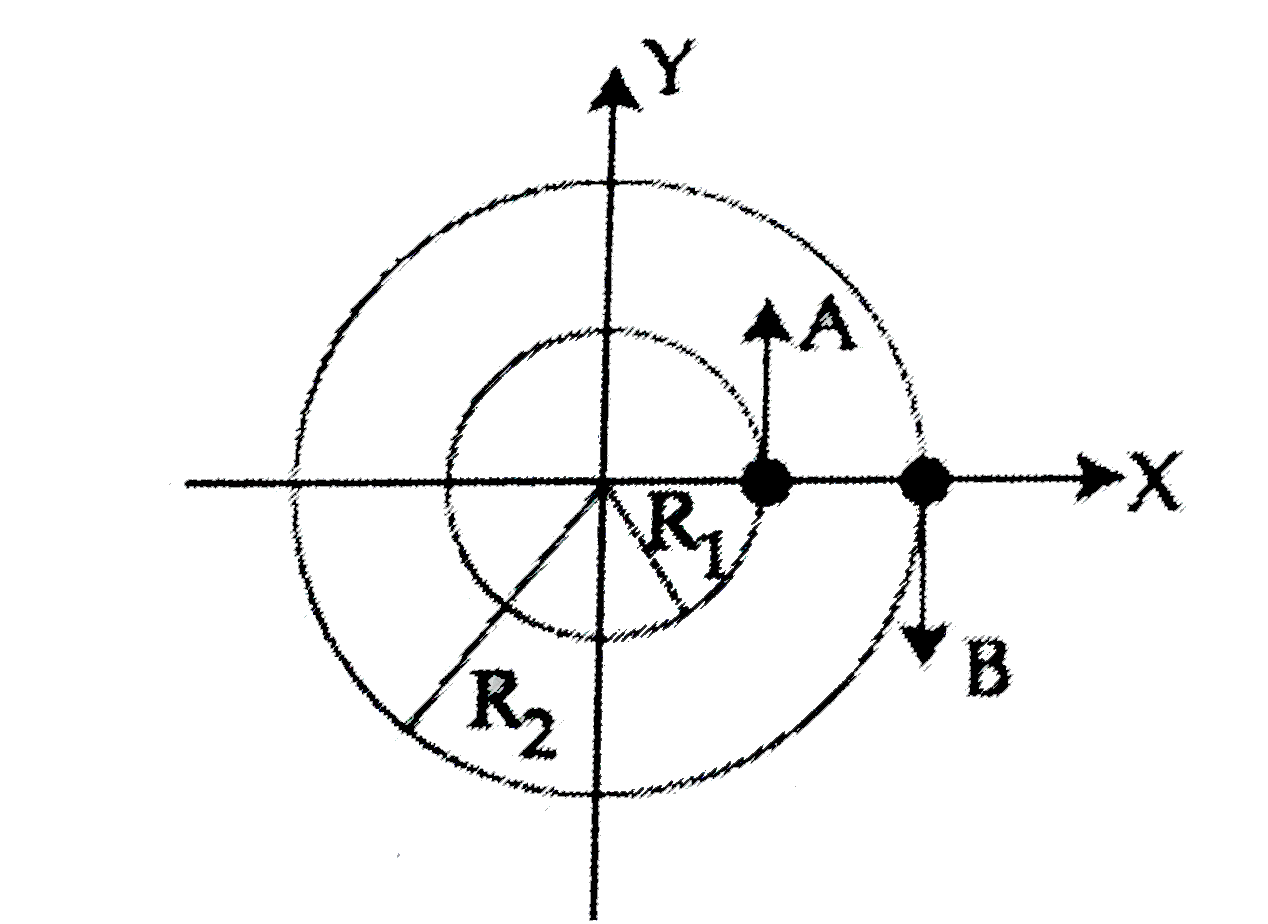Particles a and b move in opposite direction around a circle with same angular speed ω, as shown. At t=0 they are both at the point →r=→t→j, where l is the radius of the circle. The magnitude angular velocity of 'a' w.r.t. 'b' at time t=t

Zero
ωcot(ωt)
ωsinωt
2ω
Step by step video & image solution for Particles a and b move in opposite direction around a circle with same angular speed omega, as shown. At t=0 they are both at the point vecr=vect vecj, where l is the radius of the circle. The magnitude angular velocity of 'a' w.r.t. 'b' at time t=t by Physics experts to help you in doubts & scoring excellent marks in Class 12 exams.
Updated on:21/07/2023Topper's Solved these Questions
- TEST PAPERSBOOK - BANSALCHAPTER - TEST PAPERSEXERCISE - PHYSICS PART (A)
32 Videos
- TEST PAPERSBOOK - BANSALCHAPTER - TEST PAPERSEXERCISE - PHYSICS PART (B)
3 Videos
- TEST PAPERSBOOK - BANSALCHAPTER - TEST PAPERSEXERCISE - PHYSICS PART- C
4 Videos
- SEMICONDUCTORSBOOK - BANSALCHAPTER - SEMICONDUCTORSEXERCISE - CBSE Question
32 Videos
Similar Questions
Knowledge Check
Two particles P and Q are moving as shown in the figure. At this moment of time the angular speed of P w.r.t. Q is
 A5 rads−1B4 rads−1C2 rads−1D1 rads−1
A5 rads−1B4 rads−1C2 rads−1D1 rads−1Two particles A,B are moving on two concentric circles of radii R1) and R2 with equal angular speed ω. Att=0,their positions and direction fo motion are shown in the figure :
 Aω(R1+R2)ˆiB−ω(R1+R2)ˆiCω(R2−R1)ˆiDω(R1−R2)ˆi
Aω(R1+R2)ˆiB−ω(R1+R2)ˆiCω(R2−R1)ˆiDω(R1−R2)ˆiTwo particles A,B are moving on two concentric circles of radii R1) and R2 with equal angular speed ω. Att=0,their positions and direction fo motion are shown in the figure :
 Aω(R1+R2)ˆiB−ω(R1+R2)ˆiCω(R2−R1)ˆiDω(R1−R2)ˆi
Aω(R1+R2)ˆiB−ω(R1+R2)ˆiCω(R2−R1)ˆiDω(R1−R2)ˆi
The area of a circle is given by A=πr2, where r is the radius . Calculate the rate of increases of area w.r.t. radius.
View SolutionA conical pendulum is moving in a circle with angular velocity ω as shown. If tension in the string is T, which of following equations are correct ?

View SolutionA point traversed 3/4 th of the circle of radius R in time t. The magnitude of the average velocity of the particle in this time interval is
View SolutionThe rate change of angular velocity w.r to t in uniform circular motion is a
View SolutionA particle moves along a circle of radius R with a constant angular speed ω. Its displacement (only magnitude) in time t will be
View Solution

